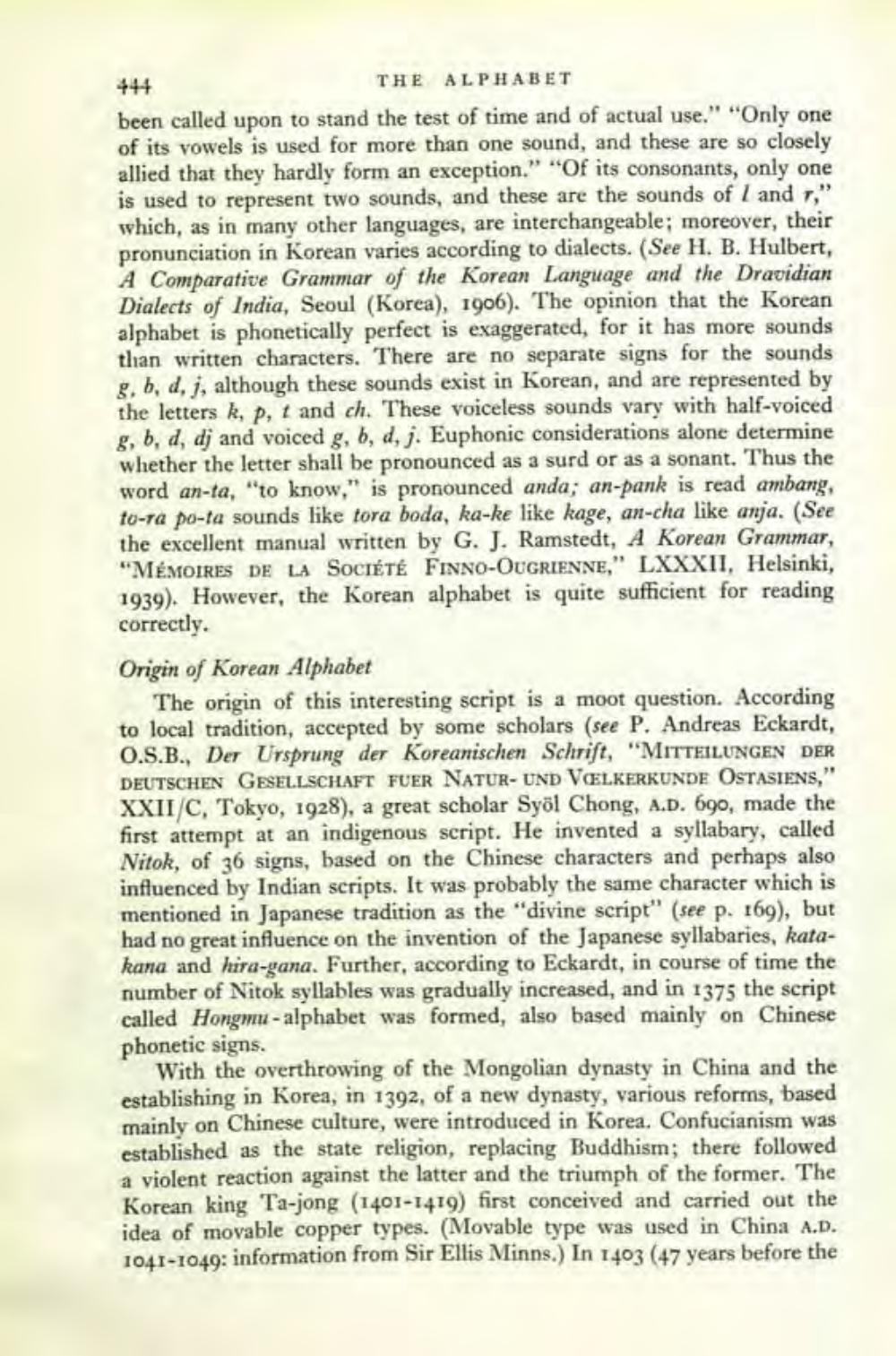________________
444
THE ALPHABET
been called upon to stand the test of time and of actual use." "Only one of its vowels is used for more than one sound, and these are so closely allied that they hardly form an exception." "Of its consonants, only one is used to represent two sounds, and these are the sounds of I and 7," which, as in many other languages, are interchangeable; moreover, their pronunciation in Korean varies according to dialects. (See H. B. Hulbert, A Comparative Grammar of the Korean Language and the Dravidian Dialects of India, Seoul (Korea), 1906). The opinion that the Korean alphabet is phonetically perfect is exaggerated, for it has more sounds than written characters. There are no separate signs for the sounds g, b, d, j, although these sounds exist in Korean, and are represented by the letters k, p, t and ch. These voiceless sounds vary with half-voiced g, b, d, dj and voiced g, b, d, j. Euphonic considerations alone determine whether the letter shall be pronounced as a surd or as a sonant. Thus the word an-ta, "to know," is pronounced anda; an-pank is read ambang, to-ra po-ta sounds like tora boda, ka-ke like kage, an-cha like anja. (See the excellent manual written by G. J. Ramstedt, A Korean Grammar, "MÉMOIRES DE LA SOCIÉTÉ FINNO-OUGRIENNE," LXXXII, Helsinki, 1939). However, the Korean alphabet is quite sufficient for reading correctly.
Origin of Korean Alphabet
The origin of this interesting script is a moot question. According to local tradition, accepted by some scholars (see P. Andreas Eckardt, O.S.B., Der Ursprung der Koreanischen Schrift, "MITTEILUNGEN DER DEUTSCHEN GESELLSCHAFT FUER NATUR- UND VOELKERKUNDE OSTASIENS," XXII/C, Tokyo, 1928), a great scholar Syöl Chong, A.D. 690, made the first attempt at an indigenous script. He invented a syllabary, called Nitok, of 36 signs, based on the Chinese characters and perhaps also influenced by Indian scripts. It was probably the same character which is mentioned in Japanese tradition as the "divine script" (see p. 169), but had no great influence on the invention of the Japanese syllabaries, katakana and hira-gana. Further, according to Eckardt, in course of time the number of Nitok syllables was gradually increased, and in 1375 the script called Hongmu-alphabet was formed, also based mainly on Chinese phonetic signs.
With the overthrowing of the Mongolian dynasty in China and the establishing in Korea, in 1392, of a new dynasty, various reforms, based mainly on Chinese culture, were introduced in Korea. Confucianism was established as the state religion, replacing Buddhism; there followed a violent reaction against the latter and the triumph of the former. The Korean king Ta-jong (1401-1419) first conceived and carried out the idea of movable copper types. (Movable type was used in China A.D. 1041-1049: information from Sir Ellis Minns.) In 1403 (47 years before the




